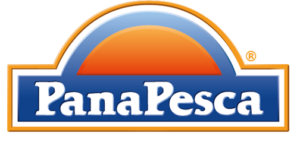6 Steps to Running a Sustainable Restaurant
For all restaurant owners out there, we know the blood, sweat, and tears that go into making your businesses successful and keeping them afloat — from the major elements of good-quality, well-sourced food to the other elements of aesthetics and creating that feel-good vibe within your restaurant.
These all play an important role in running a thriving place where customers can enjoy what you have to offer. Now we have the added piece of trying to make it all ‘sustainable.’ But is sustainability really an obstacle? Here are some reasons that suggest otherwise.

1) Reducing Food Waste
Food waste is a major problem for many restaurants. It’s become such an increasing problem that many suggest that just one restaurant can produce as much as between 25,000 to 75,000 pounds (12.5 to 37.5 tons) of food waste in a single year alone!
Technology: We are in the age of technology, so make use of it! There are some fantastic inventory platforms out there that can help you make your restaurant sustainable. PeachWorks is an incredibly useful app that notifies you when your stock is near expiration and helps prevent you from over-ordering stock.
Donation of Leftover Food: While you may have surplus food in your kitchens, we live in a world where many go hungry. Donating your restaurant’s surplus food will not only ensure you improve sustainability standards but also contribute to helping those in need. Various organizations exist, such as Too Good To Go in the UK, which aids this movement, so be sure to look for similar organizations in your restaurant’s locality.
2) Buying Local or Growing Your Own Produce
While buying food from overseas might seem more ‘business-savvy’ for your restaurant, importing and exporting food on a global level comes with associated costs, environmental and financial. You can mitigate some of these costs by doing the following:
Buy Local: Buying locally has a great number of sustainable benefits, both for you and your customer — from greater taste in flavors to understanding how the food is grown. With the ability to create a seasonal menu based upon local produce, your customers are bound to enjoy this new concept in your restaurant — and you’ll also be supporting the local economy!
However, it is also important to remember that not all locally-produced products may be sustainably cultivated. There are processes and standardized checks that sometimes can make bigger corporations and businesses a better and more viable option. That’s why we have a whole procedure dedicated to sustainability to ensure our products meet not only your needs but the environment’s needs too.
Grow Your Own: Growing your own produce for your restaurant may seem like a huge step up, but it really doesn’t have to be seen that way. You can start simply by selecting a corner inside or outside your restaurant and start growing your own herbs! Think outside the box — many US restaurants are now making use of small terraces and abandoned gardens to start growing produce for their restaurant.
3) Using Energy-Efficient Appliances
As a restaurant owner, you probably have a high usage of electricity, gas, and water with your refrigerators, freezers, microwaves, ovens, and dishwashers. This will be reflected in your monthly bills. In order to reduce your monthly costs and reduce your carbon footprint, investing in new energy-efficient appliances is a great way to make a start on becoming a sustainable restaurant.
4) Reducing Your Plastic Usage & Increasing Recycling Habits
Plastic usage is increasingly becoming a bad habit with detrimental effects upon the natural environment and its wildlife. With thousands of miles of coastal areas trashed with plastic, reducing your plastic usage and increasing your recycling procedures are more important than ever for the sustainability of your restaurant and for the environment as a whole.
Many US cities now offer recycling programs that you can join to not only help you improve your restaurant’s sustainability goals but also be part of a bigger community.
5) Advertising Your Sustainability or Get Certified
Advertise: Consider advertising your restaurant’s new sustainable efforts. In addition to this, numerous studies have shown that approximately 68.3% of customers are willing to pay more for sustainable practices implemented at restaurants.
Certification: You can even go a step further by seeking sustainable accreditation, which, in turn, helps satisfy not only existing customers but also your marketing efforts in attracting new customers to your restaurant.
6) Being Conscious of Where You Buy Your Seafood
With regard to the detrimental impact plastic is having on sea life and the need to recycle, sustainable fishing practices too can save countless marine species and ensure that wildlife continues its existence while your customers still get to taste the best of the sea.
There are a number of organizations that certify wild-caught and farmed seafood come from well-managed fisheries and farms that use sustainably-approved methods of catching and harvesting seafood. That is why we recommend when sourcing fresh or frozen seafood to look for suppliers that are committed to providing products that have been sustainably sourced.
Sustainable seafood certifications are an excellent guide to help identify suppliers that offer sustainable seafood.
At PanaPesca, we are proud to offer high-quality, sustainably-sourced seafood products. Shop now or contact us to learn more about our products today.
